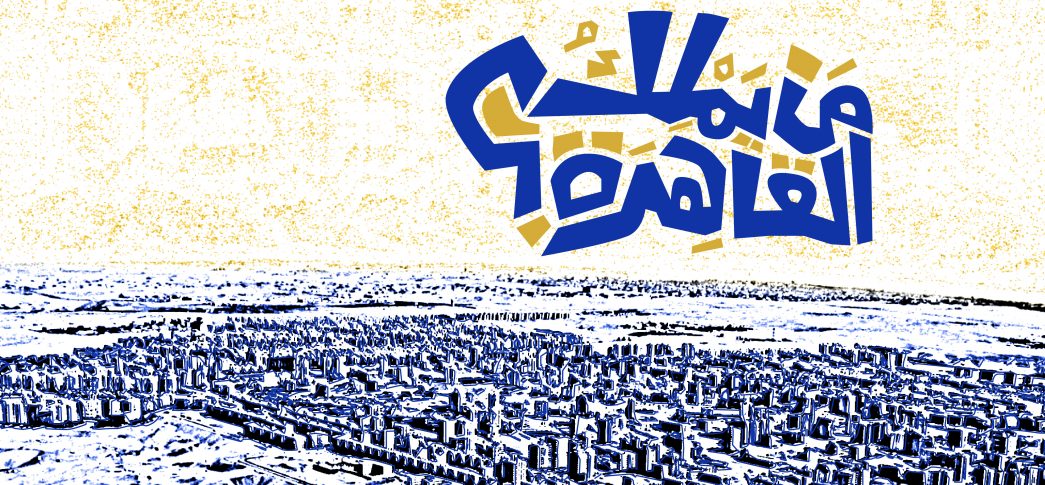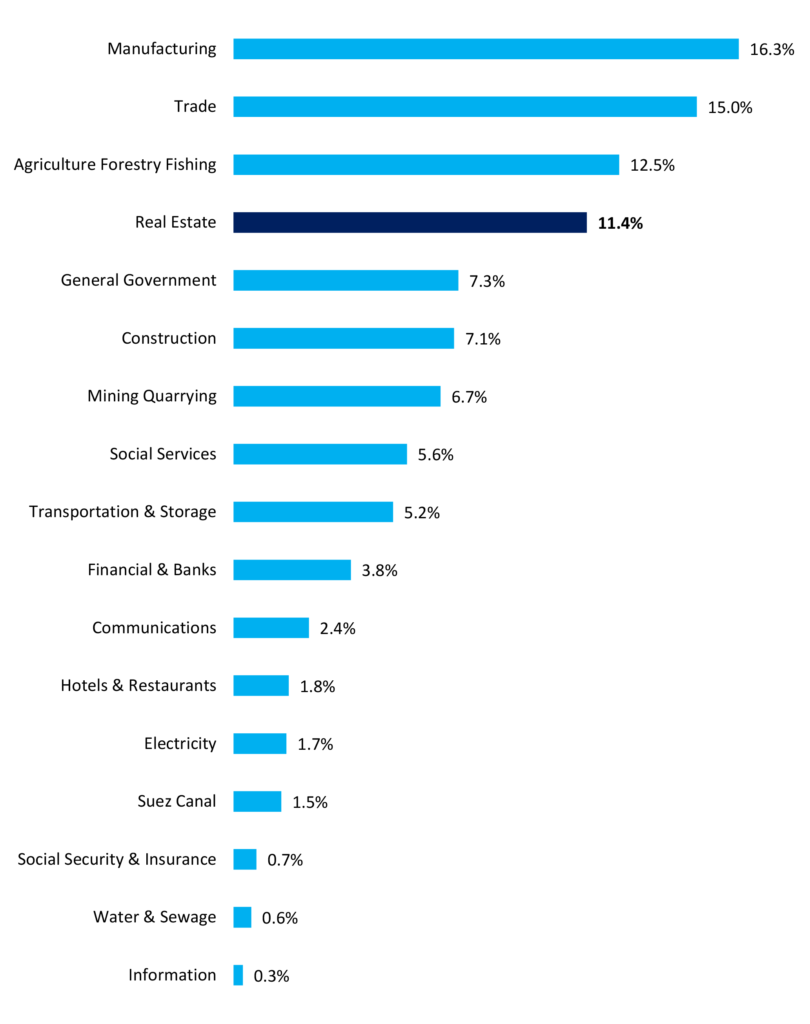
- Published on 12 September 2022
Download Who Owns Cairo? FULL REPORT
Introduction
In Egypt we have a saying that Al-ard ma bi-takulsh, wa ma bi-tishrabsh (The land does not eat nor drink). Its premise is simple: if you invest in land, it costs nothing to keep – compared to cattle, agriculture, or any other business that requires constant care, investment and effort to see it bear fruit. Land on the other hand, simply accrues in value while one sleeps, without taxes to be paid, nor any living or mechanical bits to worry about going wrong.
This short sentence underpins an investment philosophy held by everyone from mom-and-dad speculators, through billionaire investors and even governments. Since the late 1990s, real estate developers recognised how they could profit much more easily from building on large empty desert plots, than on small inner-city land. This desire was duly catered for by the government’s key developer, the New Urban Communities Authority – or NUCA for short, which had been building new towns in the desert surrounding Cairo, though mostly for the working and middle classes. Within a decade, upper class gated developments with villas overlooking golf courses and parks would become fixtures of Cairo’s suburban expansions.
Developments that would change the urban nature of the ancient city. They would also boost the scale of the real estate industry to 11% of Egypt’s GDP, making it the fourth largest contributor, running close to agriculture, and outranking traditional industries such as mining and construction (Figure 1). Being a ‘non-tradable asset’, meaning that it cannot be imported from abroad compared to other high value-added commodities that countries in the Global South find impossible to compete with, has been a primary reason boosting local investment in it. Egypt is a textbook example of that, where droves of local industrialists in the wake of tariff reduction agreements such as the GATT in the 1990s, divested from or diversified out of their primary industries in electronics, textiles, food, and vehicle manufacturing. Much of their investments were shifted into real estate.
But the flow of money did not stop at local investors. As an indicator of the appetite for foreign investment in it, real estate has held a similar share of Egypt’s stock market the EGX, again contributing to 11% of the market’s capitalization, putting it in fourth place behind banks, basic resources, and media & communications.[1]
Figure 1: Economic activities’ share of Egypt’s GDP in 2020/2021. Source: Ministry of Planning and Economic Development

The increased prominence of the real estate industry, and accompanying surge in revenue has not, however, come without its share of controversy. By 2010, two of the largest developers were embroiled in land allocation and debt disputes.[2] This escalated in the wake of the 2011 revolution, where further land dispute cases were launched against a number of the top developers that had links to the ruling regime.[3] More recently, a 2016 Facebook post and a 2020 television ad that emphasized the growing class gap between rich and poor, sparked public backlashes on social media.[4]
This popular anger against gated developments, and the real estate industry as a whole, is not wholly unfounded. In 2016, as a result of the inexorable commodification of land, we found that the median priced home was out of reach of half of Egyptians.[6] And while the government works to stabilise food prices, provides public schooling and health care to large portions of the population, its social housing programme can barely provide homes for less than half of the poor and low-income families that need them every year.[7] Any subsidised housing programs will find it hard to challenge the inexorable rise in land and, thus home prices, where international studies have found a direct link between the financialization of housing, and increasing unaffordability.[8]
With vacant unutilised land being a famously abundant resource in Egypt, why is it that affordable housing as a service, and as a right, is still beyond the reach of many? Who Owns Cairo? attempts to partly answer this question by analysing the Cairo real estate industry’s landholdings and ownership structures.
Transparency and the Real Estate Industry
Given the size and economic significance of the real estate industry in Egypt, academically it remains understudied, while the general public knows little independent facts about it. A vast range of books and studies have been written about Cairo, its housing, or Egypt’s economics of which land is a sub-section of. And while these studies have been invaluable to understand a range of aspects of housing and the real estate market, they are either outdated or have not covered real estate activity itself in-depth. In comparison to this narrow knowledge on urban land, much has been written about agricultural land, from its redistribution in the Socialist 1950s, through its liberalisation in the 1990s. And while much is known about agricultural landholdings and ownership, the same is not true for urban landholdings, where thousands of acres of desert as well as coastal land has been privatised over the last three decades.
An empirical study of real estate development can help us better understand its influence over our daily lives, especially in light of the decreasing economic weight of agriculture, as water becomes scarcer as well as dwindling profitability. As Egypt’s population increases, the majority of land-based growth has been shifting to the real estate sector. This coupled with Egypt’s economic weakness in tradable goods, makes investment, and speculation, in real estate comparatively advantageous for peripheral markets, otherwise known as emerging markets. For these reasons, urban land ownership, especially for residential purposes, represents the heart of social, economic and political transformations in Egypt, as agricultural land was over the previous centuries.
By mapping land holdings, we could establish whether monopolization and uncompetitive behaviour exists, actions that negatively affect housing affordability. By investigating ownership, we can find out who the larger owners are, and what influence they may exert on urban and housing policies. By bringing more transparency to this crucial industry, government can better regulate it, and residents can have a better understanding of who builds their homes.
Overview of the Study
(Published sections as hyperlinked)
Who Owns Cairo? comprises four sections that have been divided as such to make it simple for readers to absorb. In Section I: The Case Study Companies, a detailed fact sheet of each of the ten listed companies featured in this study is presented. It maps the company’s landholdings in the Greater Cairo region, which we simply call Cairo, listing all its developments and land plots of 31 December 2021, adding up to over 140 developments. The factsheets also analyse shareholdings of each company, showing both the direct, as well as indirect owners, tracing them as far as is factually possible to almost 100 ultimate beneficiary owners (UBO). Section II | Company Ownership , delves into the companies’ ownership data in a comparative manner, aggregating the shareholding and landholding data across all ten companies to give a comprehensive overview of the real estate sector showing the top landholders, their typologies – individuals, governments or funds, as well as their nationalities. Section III | Landholding Summary (Released in September week 3), provides a comparison of the companies’ landholdings, especially to the size of Cairo, as well as a combined timeline of the acquisitions. In Section IV | Recommendations (Released September week 4), lessons learnt from the previous two sections are built upon to provide guidance for government, the private sector and civil society, on how the real estate sector could be more transparent, as well as better managed to fulfil the need for affordable housing. A Methodology section explains the research in more detail, and an Appendices section holds a number of background papers, and further data, and will be updated with the release of each section.
Acknowledgments
Lead Researcher: Yahia Shawkat
Methodology Review: Osama Diab
Graphic Identity: Fadi Abdelnour – subtype.studio
Original main image: Allan Doyle
Notes and Sources
[1] Egyptian Exchange EGX, “Annual Report 2021: Year of Recovery & Preparation for the Future” (Egyptian Exchange EGX, 2021), 62, https://www.egx.com.eg/get_pdf.aspx?ID=36933&Lang=ENG [2] “PA Gives Go Ahead for Dreamland Auction - Daily News Egypt,” May 22, 2008, https://www.dailynewsegypt.com/2008/05/22/pa-gives-go-ahead-for-dreamland-auction/; “UPDATE 3-Court Rules against Talaat Moustafa Land Deal,” Reuters, June 22, 2010, sec. Financials, https://www.reuters.com/article/talaatmoustafa-egypt-idUKLDE65L0VP20100622 [3] See for example SODIC, EMFD, ORHD and PHDC in this study. [4] Veto, “I’lan beverly hills yuthir ’adab ruwad al-tawasul al-ijtima’ey (Beverly Hills ad stokes anger of social media users),” Veto, December 31, 2016, https://www.vetogate.com/2524311; Tawba Khalifi, “Madinaty namujajan: Limaza yalja’ al-misriyun li-l-áysh fi mujamaát mughalqa?,” BBC News Arabic, May 10, 2020, https://www.bbc.com/arabic/trending-52535631 [6] 10 Tooba, “Built Environment Deprivation Index,” BEDI, September 2016, sec. Affordability, http://10tooba.org/bedi/en/ [7] Yahia Shawkat, “A Million Units for Whom? Six Facts about the Social Housing Project,” Built Environment Observatory, May 28, 2018, http://marsadomran.info/en/facts_budgets/2018/05/1543/ [8] “Who Owns the City? Exploratory Research Activity on the Financialisation of Housing in EU Cities” (Joint Research Centre (JRC), 2020), 81, https://publications.jrc.ec.europa.eu/repository/handle/JRC120776
